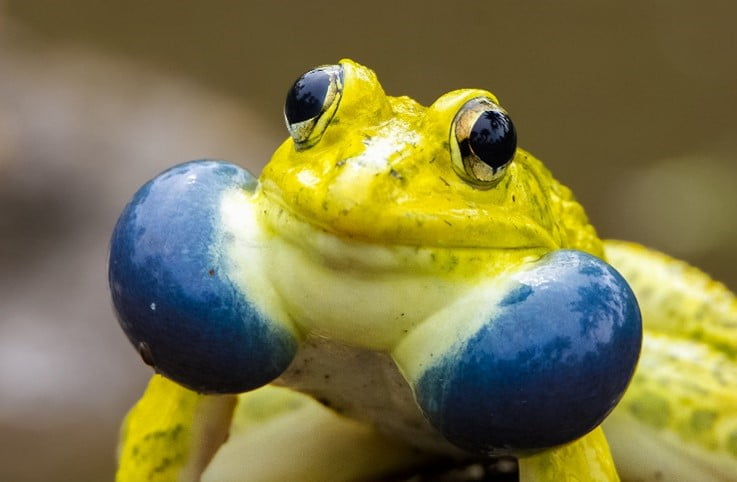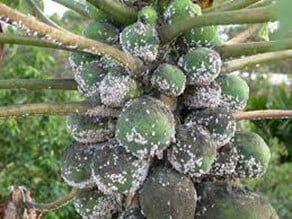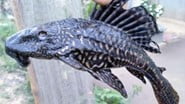Governance
In News: An invasive species, Senna spectabilis, an exotic tree, has taken over between 800 and 1,200 hectares of the buffer zones of the Mudumalai Tiger Reserve (MTR) especially the Singara and Masinagudi forest ranges, as well as in Kargudi range in the core area of the reserve.
About:
- Introduced as an ornamental species and for use as firewood from South and Central America or for paper-making, the species has become highly invasive in the Sigur plateau in both the core and buffer zones of the MTR.
- It has bright yellow flowers and has a negative effect on local biodiversity, crowding out native species and limiting food availability for wildlife.
- Forest Department is formulating a 10-year-plan to systematically remove Lantana camara, the other major weed that poses a threat to biodiversity in both the core and buffer zones of the Tiger Reserve.
- 5 major invasive species of Nilgiris are:
- Senna spectabilis
- Lantana camara
- wattle
- Eucalyptus
- Pine
- Eucalyptus and Pine, though exotic, do not spread as quickly as the other species and are considered easier to manage
- Funds raised from the removal of the species will be used in eco-restoration to help bring back native species.

Invasive species:
- Invasive alien species are plants, animals, pathogens and other organisms that are non-native to an ecosystem, and which may cause economic or environmental harm or adversely affect human health.
- They regenerate at an alarming speed and threaten to edge out the indigenous flora
- Concerns:
- The thick foliage arrests the growth of other indigenous species of trees and grass, and causes food shortage for the wildlife population, especially herbivores, during summer.
- Moreover, wildlife would not feed on the leaves of the tree as it was not palatable for them
- Some of the invasive plants have a toxic impact on the landscape after remaining underwater.
- Some weeds have herbal properties, but their toxicity outweighs their utility. For instance, wild boars love to gorge on the succulent rootlets of the Leea macrophylla or ‘kukura thengia’ that is fast clogging the patrolling paths and grasslands.
Examples of Invasive Animal species:
- Indian Bullfrog – Andaman and Nicobar

- Papaya Mealy Bug – Assam

- Amazon sailfin catfish – West Bengal

- Cannibal Snail / Rosy wolf snail – Indian Ocean

- African apple snail – Andaman and Nicobar

Examples of Invasive species:
- Ipomoea (Ipomoea carnea)
- Mimosa (Mimosa himalaica)
- Parthenium (Parthenium hysterophorus) is believed to have come to India as contaminants in a consignment of wheat imported from the U.S. in the 1950s
- Lantana (Lantana camara) was brought by the British as ornamental plants from South America two centuries ago.
- Bombax ceiba (locally called Semul)
- Largestroemia speciosa (locally called ejhar)
- Cestrum diurnum or day-blooming jasmine of West Indies origin; otherwise a source of vitamin D3. Once the modalities are finalised, this weed can be turned into a commercial crop for the people in the vicinity of Kaziranga. Pharmaceutical companies need tonnes of dry leaves of this plant periodically
- Cane is a commercial plant that is threatening to be an invasive plant in Kaziranga.
Mudumalai Tiger Reserve (MTR):
- Mudumalai Tiger Reserve is located in the Nilgiris District of Tamil Nadu state at the tri-junction of three states, viz, Karnataka, Kerala and Tamil Nadu.
- It is a part of Nilgiri Biosphere Reserve (1st Biosphere Reserve in India) along with
- Wayanad Wildlife Sanctuary (Kerala) in the West
- Bandipur National Park (Karnataka) in the North
- Mukurthi National Park
- Silent Valley in the South.
- Flora:
- The Reserve has tall grasses, commonly referred to as ‘Elephant Grass’.
- Bamboo of the giant variety, valuable timber species like Teak, Rosewood, etc.
- There are several species of endemic flora.
- Fauna: Flagship Species: Tiger and Asian Elephant.
Other Tiger Reserves in Tamil Nadu
- Anamalai Tiger Reserve (ATR)
- Kalakad Mundanthurai Tiger Reserve (KMTR)
- Sathyamangalam Tiger Reserve (STR)

Source: The Hindu
Previous Year Question
Q.1) Which of the following are in Agasthyamala Biosphere Reserve? (2019)
- Neyyar, ldl Peppara and Shendurney Wildlife Sanctuaries; and Kalakad Mundanthurai Tiger Reserve
- Mudumalai, Sathyamangalam and Wayanad Wildlife Sanctuaries; and Silent Valley National Park
- Kaundinya, Gundla Brahmeswaram and Papikonda Wildlife Sanctuaries; and Mukurthi National Park
- Kawal and Sri Venkateswara Wildlife Sanctuaries; and Nagarjunasagar-Srisailam Tiger Reserve














